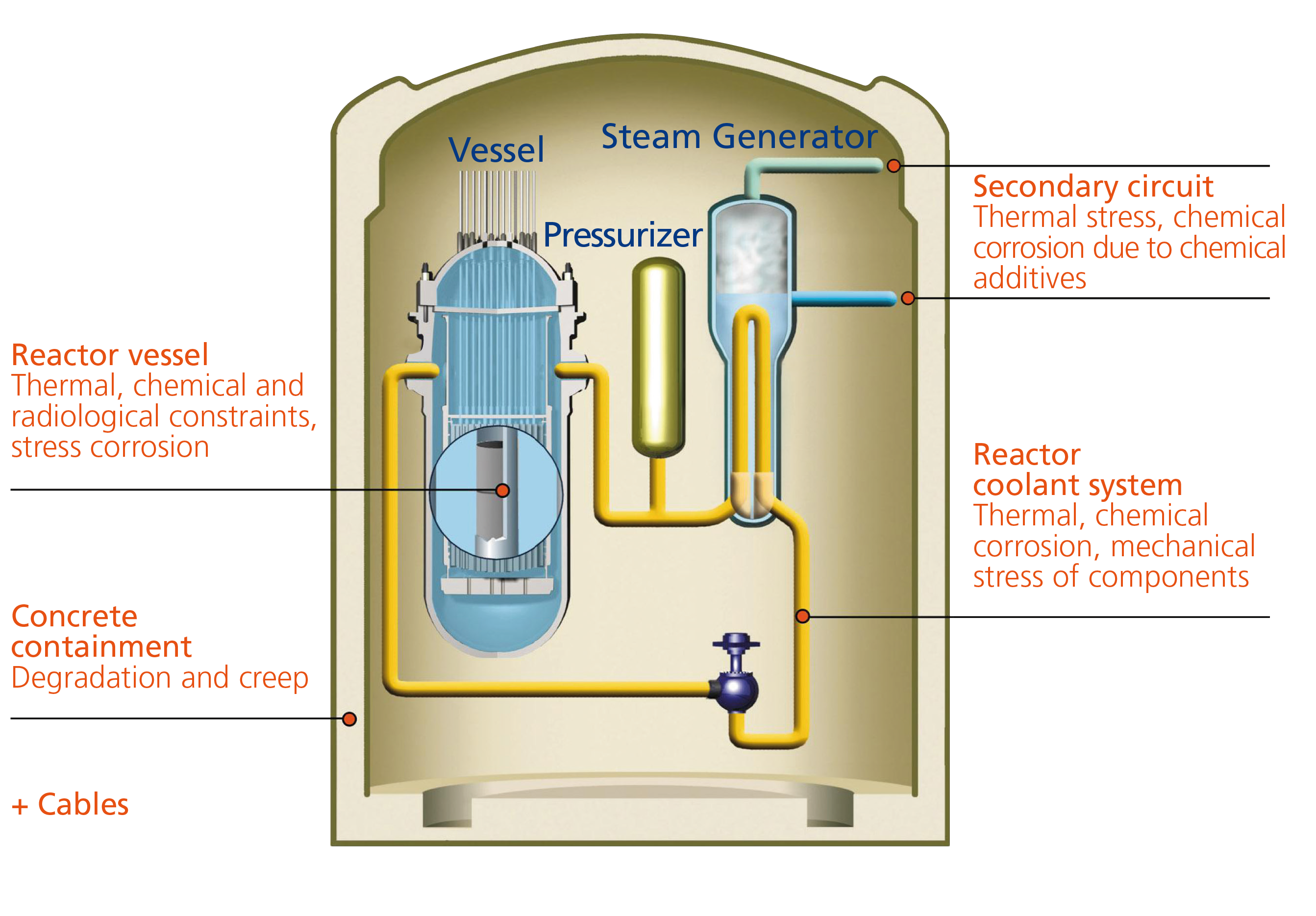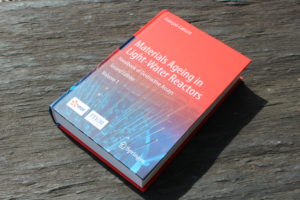Most current efforts focus on understanding and modeling the aging of materials to predict the remaining life of nuclear power plants as this topic is a major international issue. Research areas are stainless steels and alloys (reactor vessel internal structures, primary and secondary circuits), polymer material (electric cables, coatings and insulator materials) and the concrete structures such as reactor containment. Key processes studied are stress-corrosion cracking, thermal and irradiation induced embrittlement, fatigue, chemical corrosion and erosion.

Research at the MAI is divided into three areas: experiments, modelling and operational feedback. Experimental research is based on observation and tests on specimens specifically developed by and for the MAI. The tests include thermal aging (months or years of thermal stress) for which the Institute has multiple furnaces that can generate temperatures of up to 650 °C.
Modelling is one of the central activities of the MAI. Mathematical models not only allow us to test our understanding of fundamental processes such as stress corrosion cracking, corrosion fatigue and creep – they also enable us to capitalize on our databases through parametric studies. Operational feedback data are obtained using samples of material that are made available by utilities after replacement of specific components.
Major objectives of the MAI and its members are:
- To understand, model, predict and anticipate the aging of materials used in the electricity generating plants, whether nuclear, fossil or hydro
- To develop knowledge about the aging of materials to be used in future plants in order to make recommendations to the members of the institute as to the choices offered by the manufacturers
- To capitalize on shared resources, maintain and share knowledge and skills to help plant operators, throughout the world, incorporate the highest standards of safety and thus reinforce the community of stakeholders
- To contribute to the training of students and engineers on materials aging in nuclear power plants.


 Discover the Handbook of material ageing management for nuclear reactors
Discover the Handbook of material ageing management for nuclear reactors